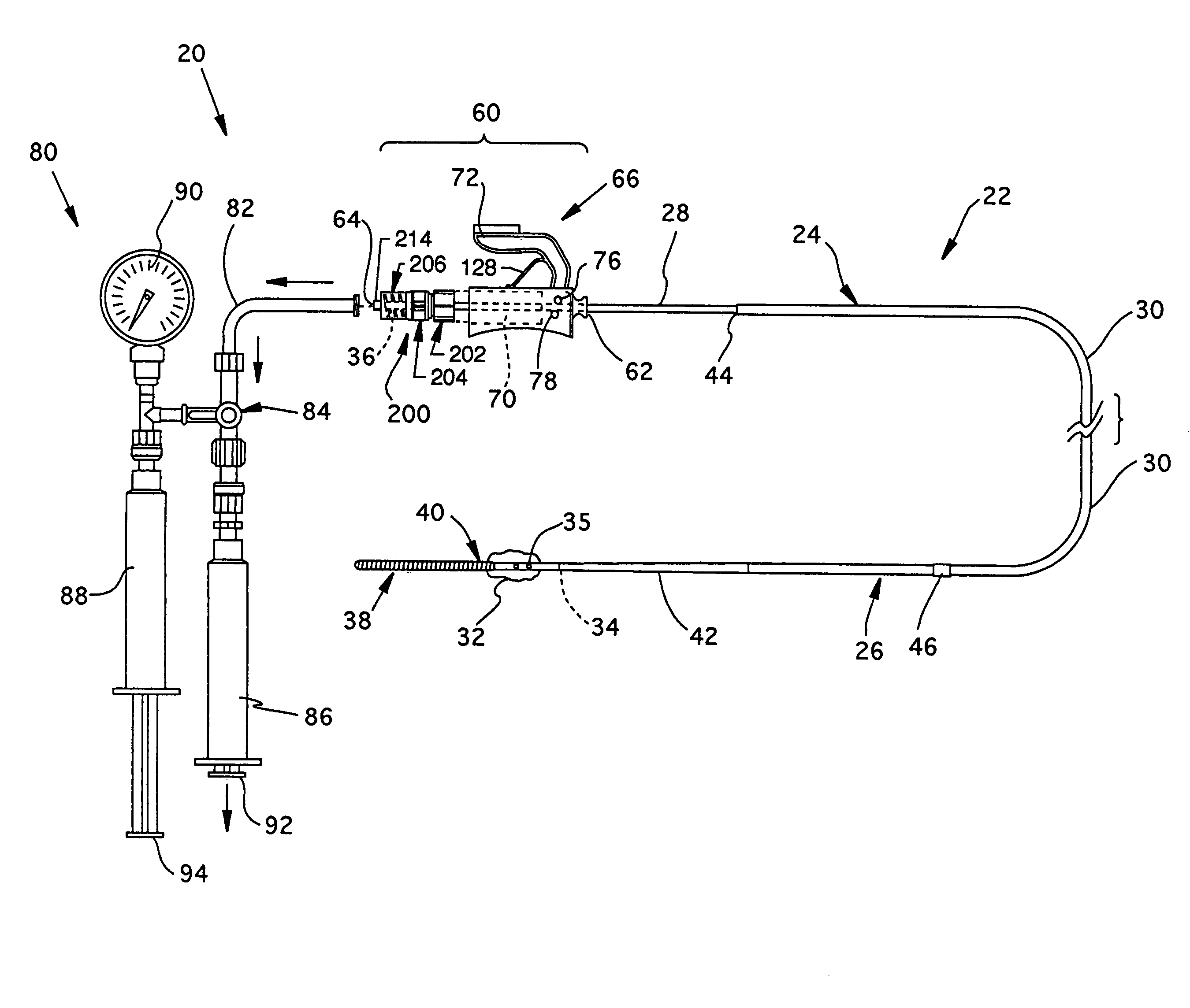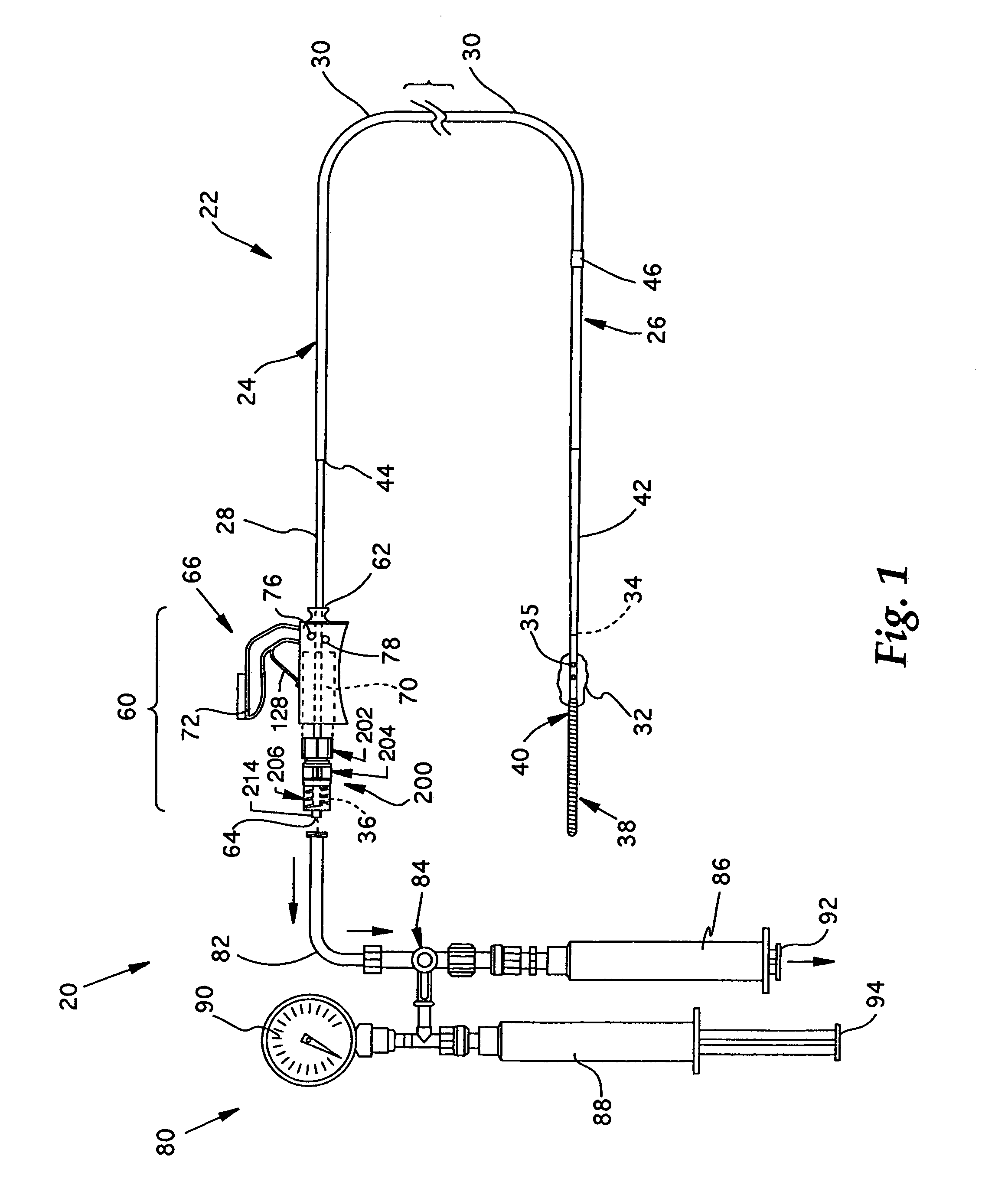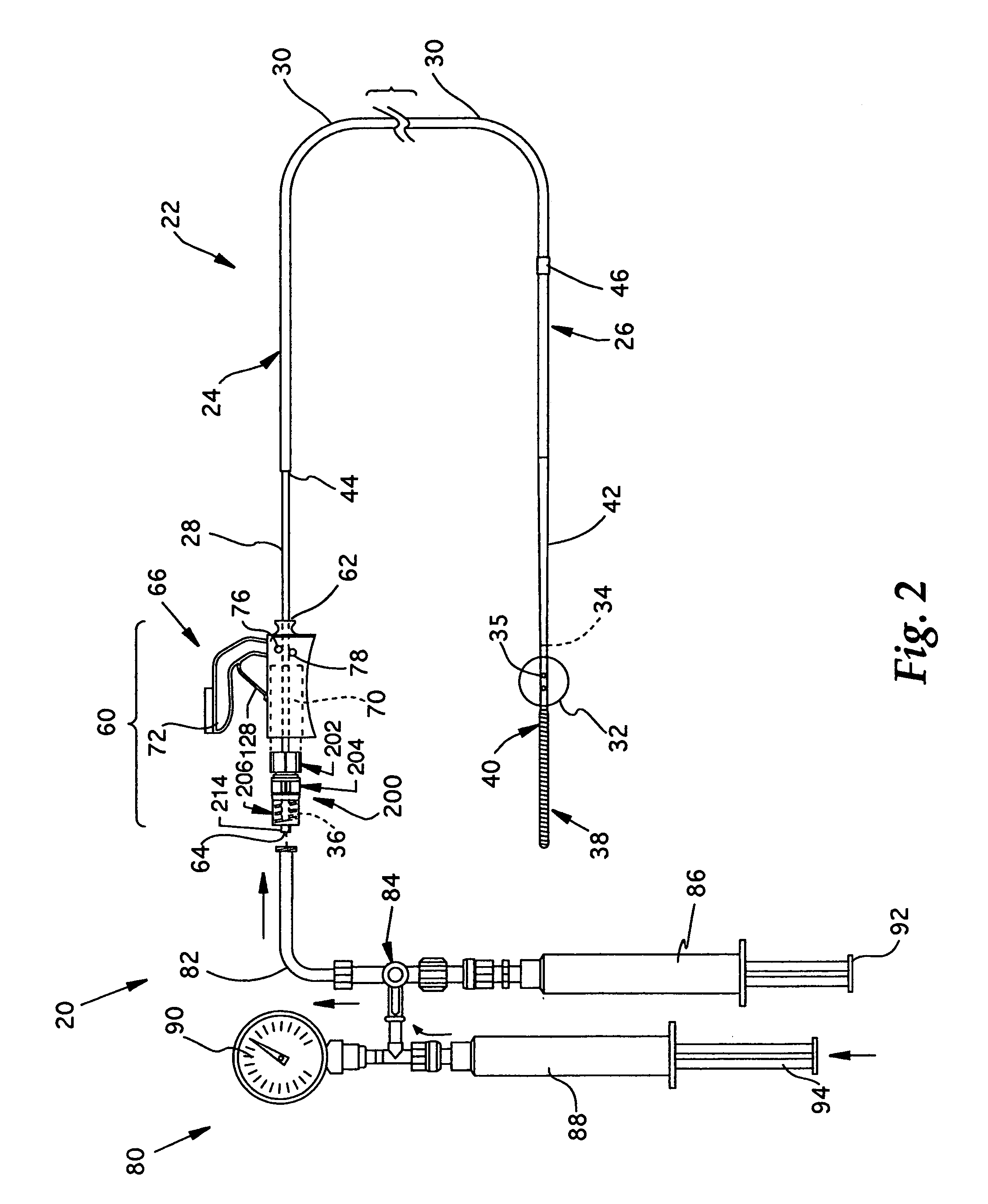Gas inflation/evacuation system and sealing system incorporating a compression sealing mechanism for guidewire assembly having occlusive device
a sealing mechanism and gas inflation technology, applied in the field of vascular medical devices, can solve the problems of permanent damage of the affected region, similar damage to many other vessels in the body, such as the peripheral vessels, cerebral vessels, etc., and achieve the effects of reducing the risk of potential damage to downstream tissue, shortening the length, and increasing the complexity
- Summary
- Abstract
- Description
- Claims
- Application Information
AI Technical Summary
Benefits of technology
Problems solved by technology
Method used
Image
Examples
Embodiment Construction
[0049]Referring now to FIGS. 1 and 2, the overall structure and operation of a guidewire occlusion system 20 incorporating the present invention will be described. The guidewire occlusion system 20 includes a guidewire assembly 22, a sealing system 60, and a gas inflation / evacuation system 80. The preferred embodiments of the overall guidewire occlusion system 20 are described in further detail in the previously identified co-pending applications entitled “Guidewire Occlusion System Utilizing Repeatably Inflatable Gas-Filled Occlusive Device”, “Guidewire Assembly Having Occlusive Device and Repeatably Crimpable Proximal End,”, and “Gas Inflation / Evacuation System and Sealing system for Guidewire Assembly Having Occlusive Device”.
[0050]Guidewire assembly 22 includes a guidewire 24, an occlusive device such as an occlusive balloon 32, and, optionally, a flexible tip 38. The guidewire 24 is tubular and comprises an extended sealable section 28, a main body portion 30, and a distal port...
PUM
 Login to View More
Login to View More Abstract
Description
Claims
Application Information
 Login to View More
Login to View More - R&D
- Intellectual Property
- Life Sciences
- Materials
- Tech Scout
- Unparalleled Data Quality
- Higher Quality Content
- 60% Fewer Hallucinations
Browse by: Latest US Patents, China's latest patents, Technical Efficacy Thesaurus, Application Domain, Technology Topic, Popular Technical Reports.
© 2025 PatSnap. All rights reserved.Legal|Privacy policy|Modern Slavery Act Transparency Statement|Sitemap|About US| Contact US: help@patsnap.com



